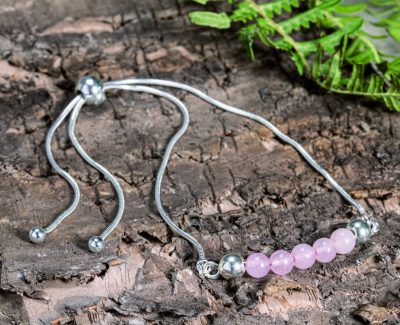Step 1
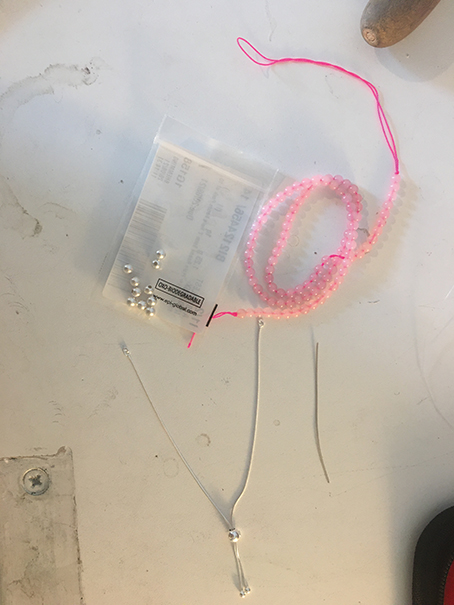
CHOOSE YOUR WIRE AND BUFF THE EDGES
When choosing your beads, take note of the thread size and choose an appropriate wire size. I have used 0.8mm Silver wire and my corresponding beads have thread sizes of 0.8mm and 1.6mm – this has worked well. Start by gently buffing or filing the ends of the Silver wire to round off the sharp edges, using wet and dry paper or a needle.
Step 2
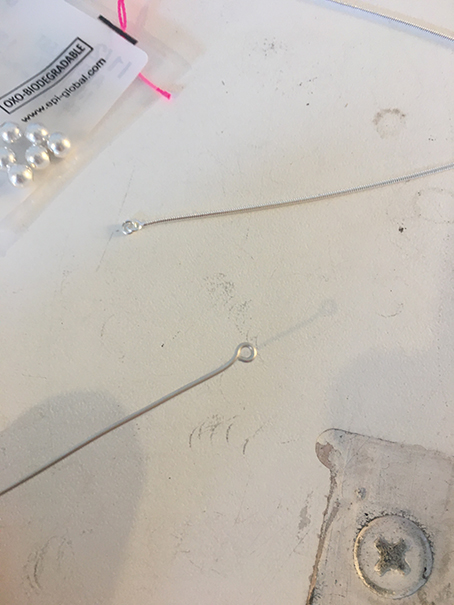
CREATE YOUR LOOP
Using round nose pliers, carefully make a loop at the end of the Silver wire. Use the end of the plier nose to make a tight small loop. For an extra neat piece, bend the loop back on itself slightly to create a gentle curve into the loop.
Step 3
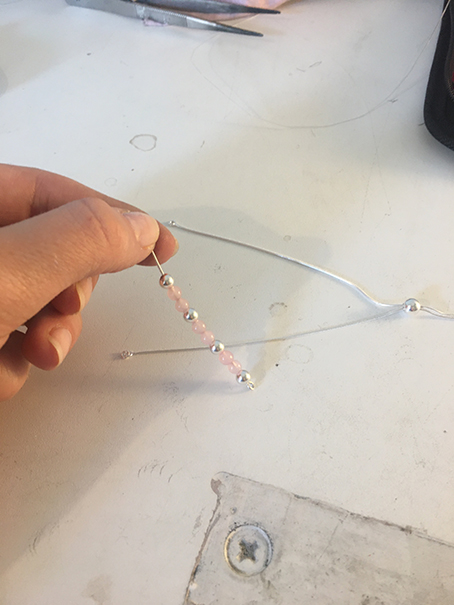
CREATE YOUR BEAD LAYOUT
Take some time to experiment and play with the layout of the beads. Different patterns and styles can be applied, entirely determined by your own aesthetic taste – seed beads would work very nicely for a denser beaded style.
Step 4
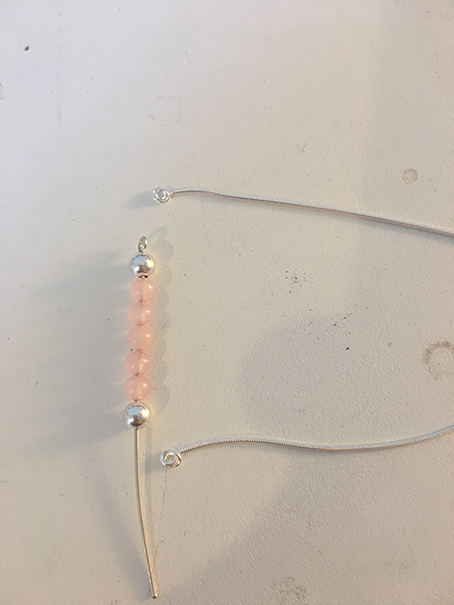
CREATE YOUR END LOOP
Depending on your chosen bead pattern, you may need to cut the wire down before using round nose pliers to create an end loop. This loop will keep all the beads in place. Use a pair of pliers to hold each end of the wire and twist so
the loops are facing the same way. This will also strengthen the wire.
Step 5
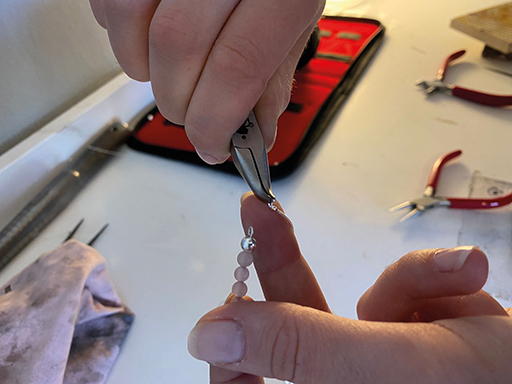
OPEN YOUR JUMP RINGS
Secure the beaded wire to the open jump rings at the end of the snake chain. This is quite fiddly, so take your time and use pliers to grip the jump ring.
Step 6
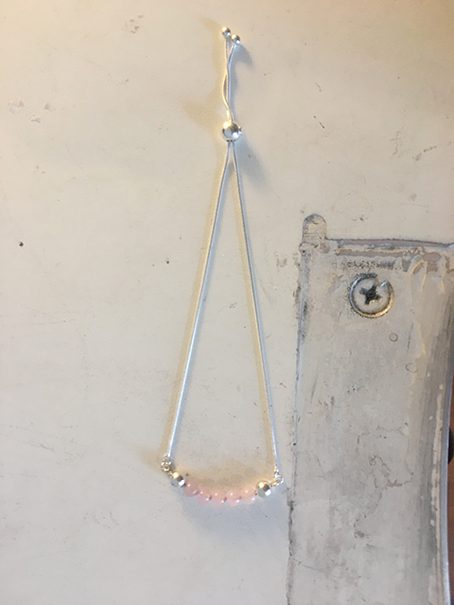
ADJUST AND SECURE TO COMPLETE YOUR FINISHED PIECE
If appropriate to your design, gently bend the wire slightly to best suit your wrist, then check all jump rings are properly secured.
Your finished piece
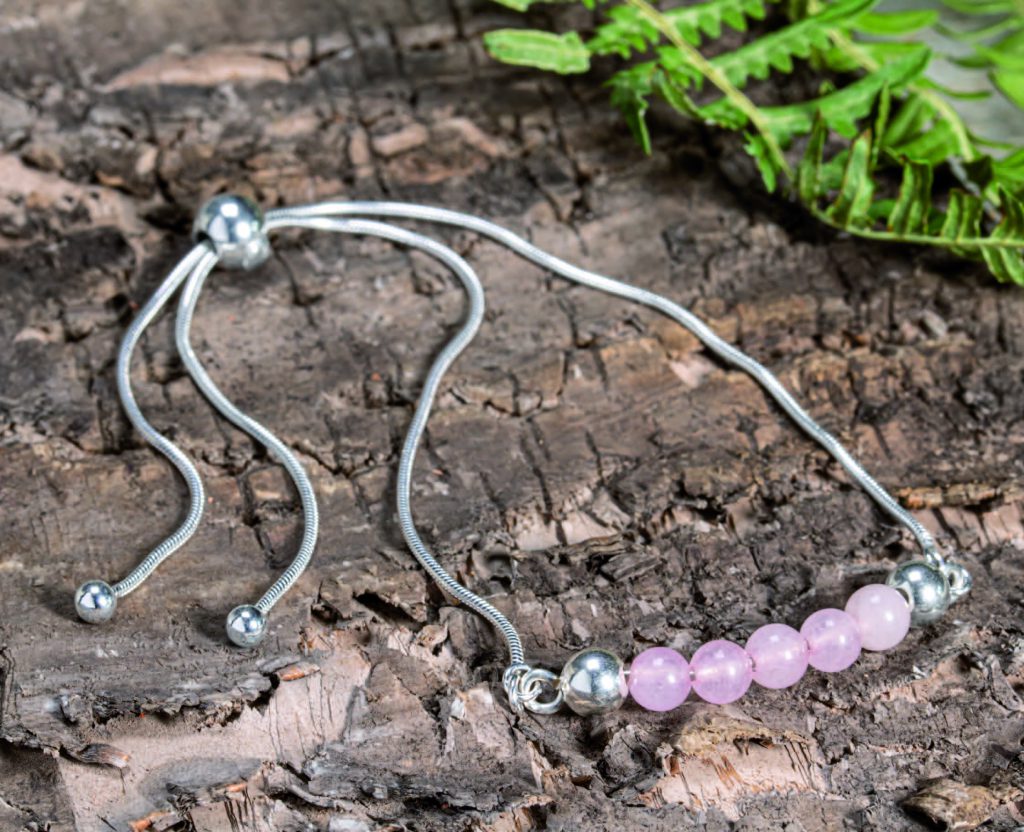
We want to see what you have been making! Share your creations with us on social media, tagging in Cooksongold on Facebook, Twitter and Instagram.

Abby Blest
Abigail Yvette Blest is a jewellery designer and maker who trained in the historical Jewellery Quarter, she has a particular interest in traditional bench skills. In the past Abigail has explored mixed media in her jewellery practice, such as wood, ceramics and enamel.

